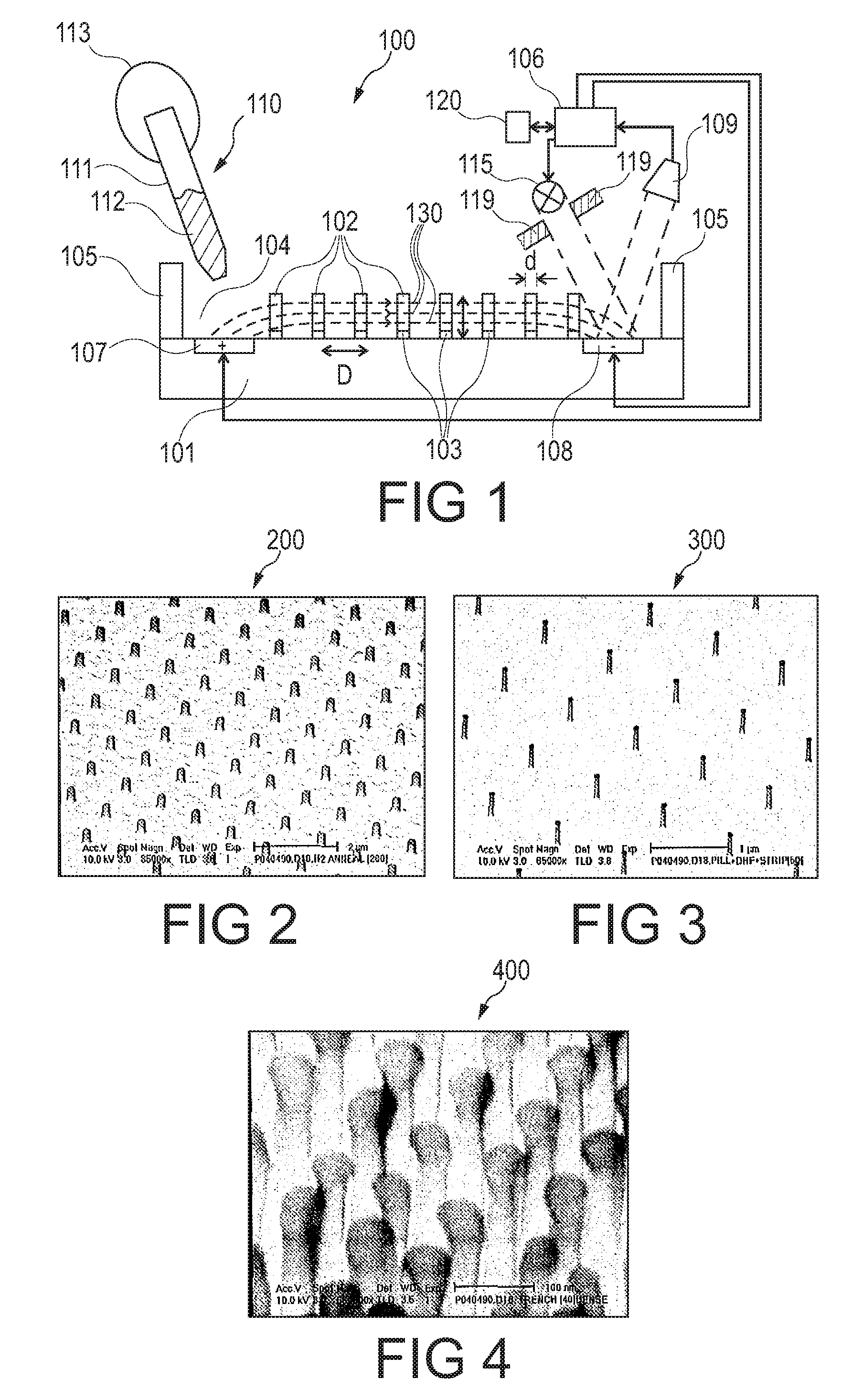Fluid separation structure and a method of manufacturing a fluid separation structure
a technology of fluid separation and structure, which is applied in the direction of electrolysis, chemical vapor deposition coating, diaphragms, etc., can solve the problems of inability to ensure the quality and reproducibility of manufactured devices, difficult to manufacture such devices on an industrial scale, and difficult to meet the requirements of the requirements of the industrial scale. achieve the effect of improving the device performance, high performance and refinement of the spatial resolution of the nanowire array
- Summary
- Abstract
- Description
- Claims
- Application Information
AI Technical Summary
Benefits of technology
Problems solved by technology
Method used
Image
Examples
Embodiment Construction
[0058]The illustration in the drawing is schematical. In different drawings, similar or identical elements are provided with the same reference signs.
[0059]In the following, referring to FIG. 1, a fluid separation apparatus 100 according to an exemplary embodiment of the invention will be explained.
[0060]The fluid separation apparatus 100 comprises a silicon substrate 101 such as a silicon wafer. A plurality of nanowires 102 are vertically grown in rows and columns, that is to say in a two-dimensional configuration, on a surface of the substrate 101, more particularly on catalyst spots 103 which have previously been formed by a deposition technique on a surface of the substrate 101.
[0061]As can be taken from FIG. 1, a sample reservoir 104 is defined by the main surface of the substrate 101 as well as by lateral sidewalls 105 delimiting the structure.
[0062]FIG. 1 schematically illustrates a pipette 110 having a capillary 111 and a fluidic sample 112 filled in the capillary 111. By ma...
PUM
| Property | Measurement | Unit |
|---|---|---|
| Fraction | aaaaa | aaaaa |
| Distance | aaaaa | aaaaa |
| Distance | aaaaa | aaaaa |
Abstract
Description
Claims
Application Information
 Login to View More
Login to View More - R&D
- Intellectual Property
- Life Sciences
- Materials
- Tech Scout
- Unparalleled Data Quality
- Higher Quality Content
- 60% Fewer Hallucinations
Browse by: Latest US Patents, China's latest patents, Technical Efficacy Thesaurus, Application Domain, Technology Topic, Popular Technical Reports.
© 2025 PatSnap. All rights reserved.Legal|Privacy policy|Modern Slavery Act Transparency Statement|Sitemap|About US| Contact US: help@patsnap.com



